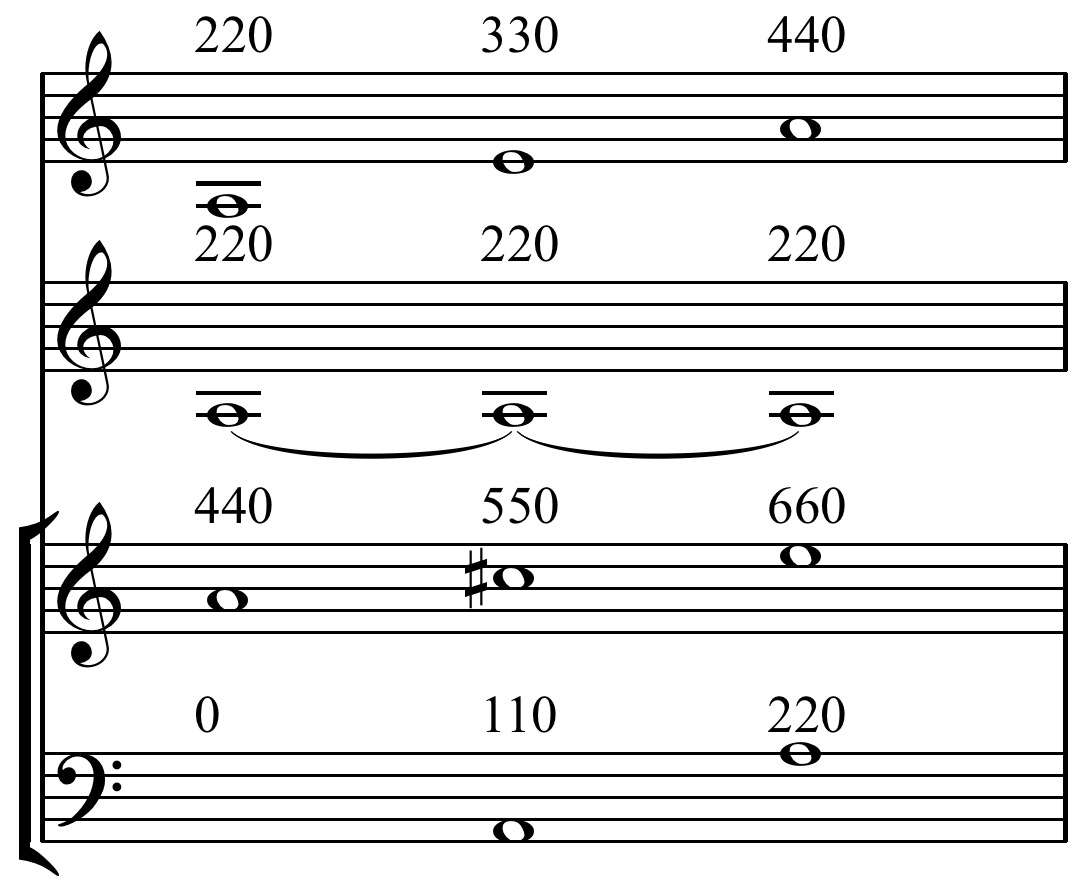
Combination tone
A combination tone (also called resultant or subjective tone)[2] is a psychoacoustic phenomenon of an additional tone or tones that are artificially perceived when two real tones are sounded at the same time. Their discovery is credited to the violinist Giuseppe Tartini[3] (although he was not the first, see Georg Andreas Sorge) and so they are also called Tartini tones.
There are two types of combination tones: sum tones whose frequencies are found by adding the frequencies of the real tones, and difference tones whose frequencies are the difference between the frequencies of the real tones. "Combination tones are heard when two pure tones (i.e., tones produced by simple harmonic sound waves having no overtones), differing in frequency by about 50 cycles per second [Hertz] or more, sound together at sufficient intensity."[2]
Combination tones can also be produced electronically by combining two signals in a circuit that has nonlinear distortion, such as an amplifier subject to clipping or a ring modulator.
Resultant tone[edit]
A resultant tone is "produced when any two loud and sustained musical sounds are heard at the same time."[6]
In pipe organs,[7] this is done by having two pipes, one pipe of the note being played, and another harmonically related, typically at its fifth, being sounded at the same time. The result is a pitch at a common subharmonic of the pitches played (one octave below the first pitch when the second is the fifth, 3:2, two octaves below when the second is the major third, 5:4). This effect is useful especially in the lowest ranks of the pipe organ where cost or space could prohibit having a rank of such low pitch. For example, a 32' pipe would be costly and take up as much as 16' of vertical space (if capped) or more commonly 17-32' (if open-ended) for each pipe. Using a resultant tone for such low pitches reduces the cost and space factor, but does not sound as full as a true 32' pipe. The effect can be enhanced by using further ranks in the harmonic series of the desired resultant tone.
This effect is most often used in the lowest octave of the organ only. It can vary from highly effective to disappointing depending on several factors, primarily the skill of the organ voicer, and the acoustics of the room the instrument is installed in.
It is possible to produce a melody with resultant tones from multiple harmonics played by two or more instruments. There is an example with seven saxophones.